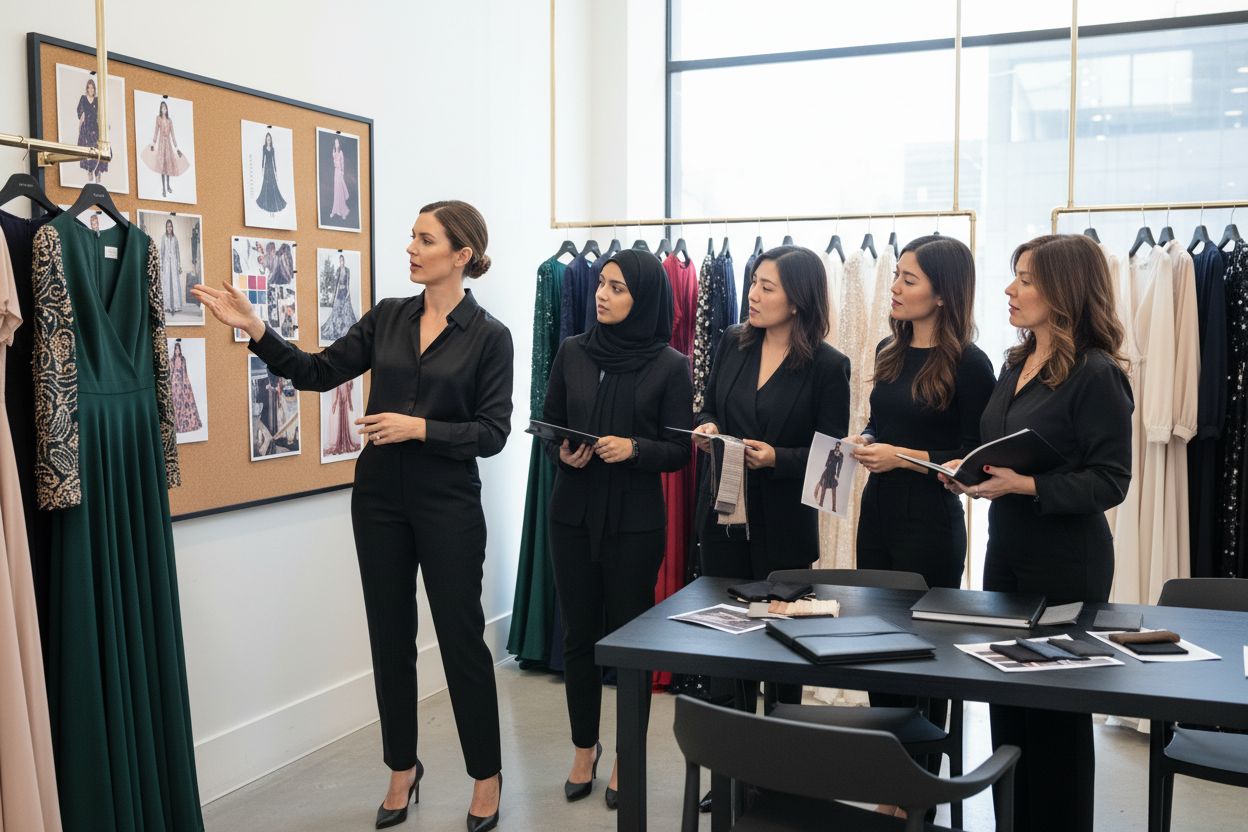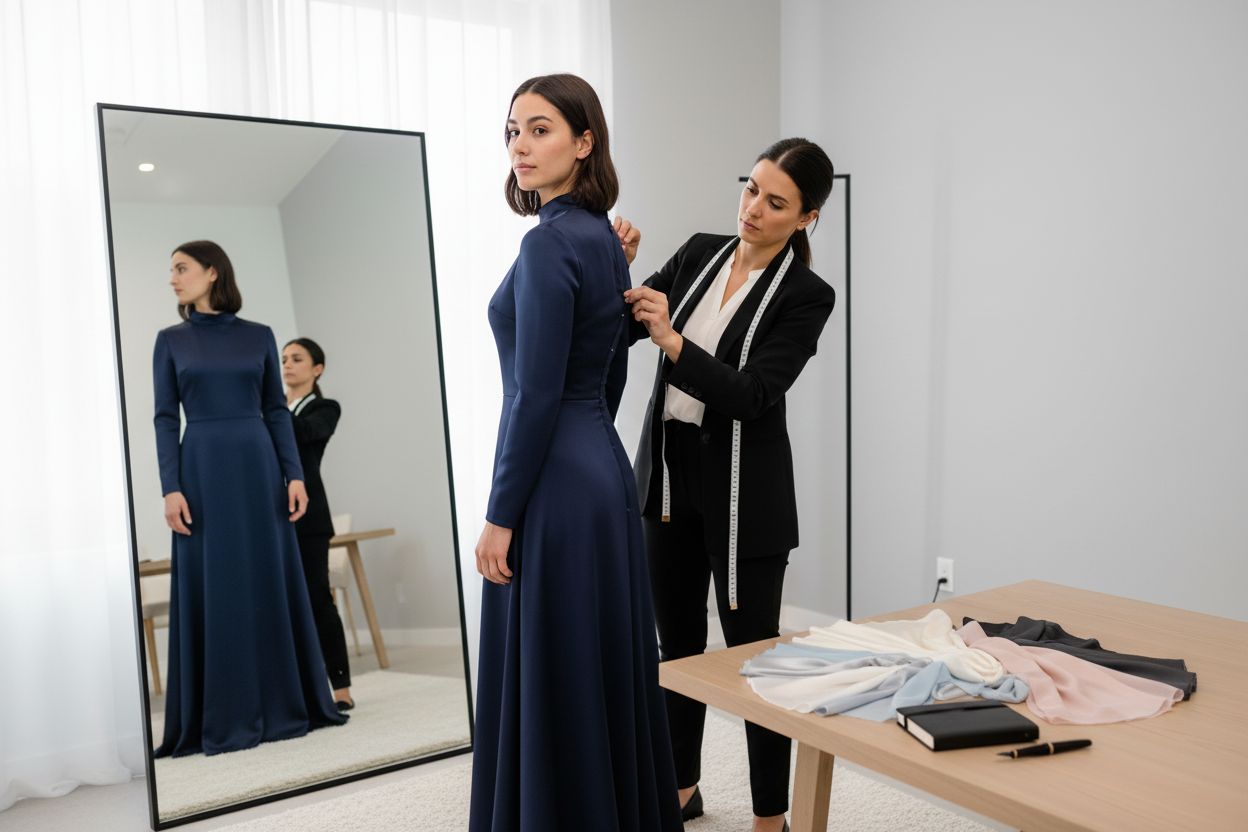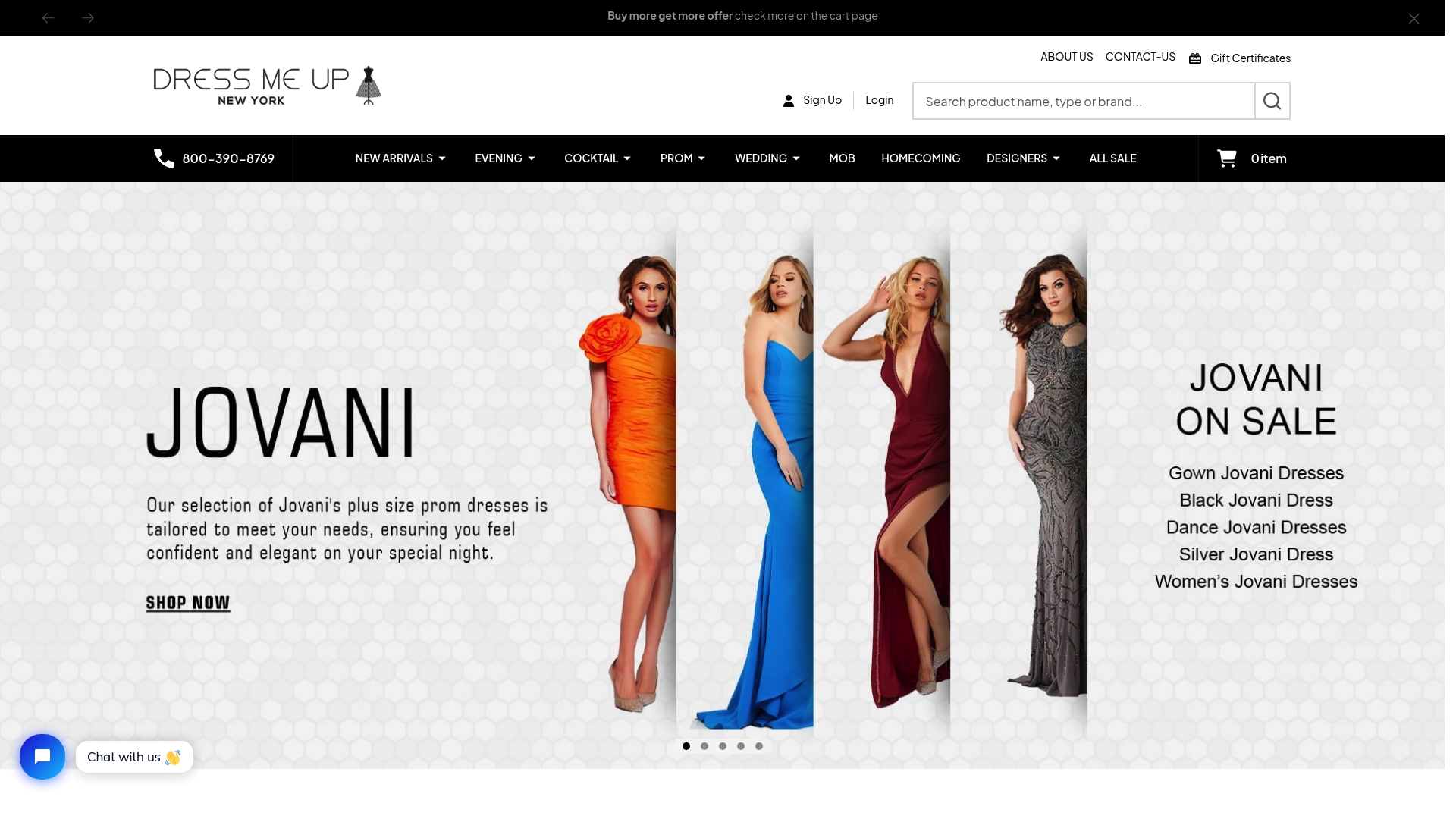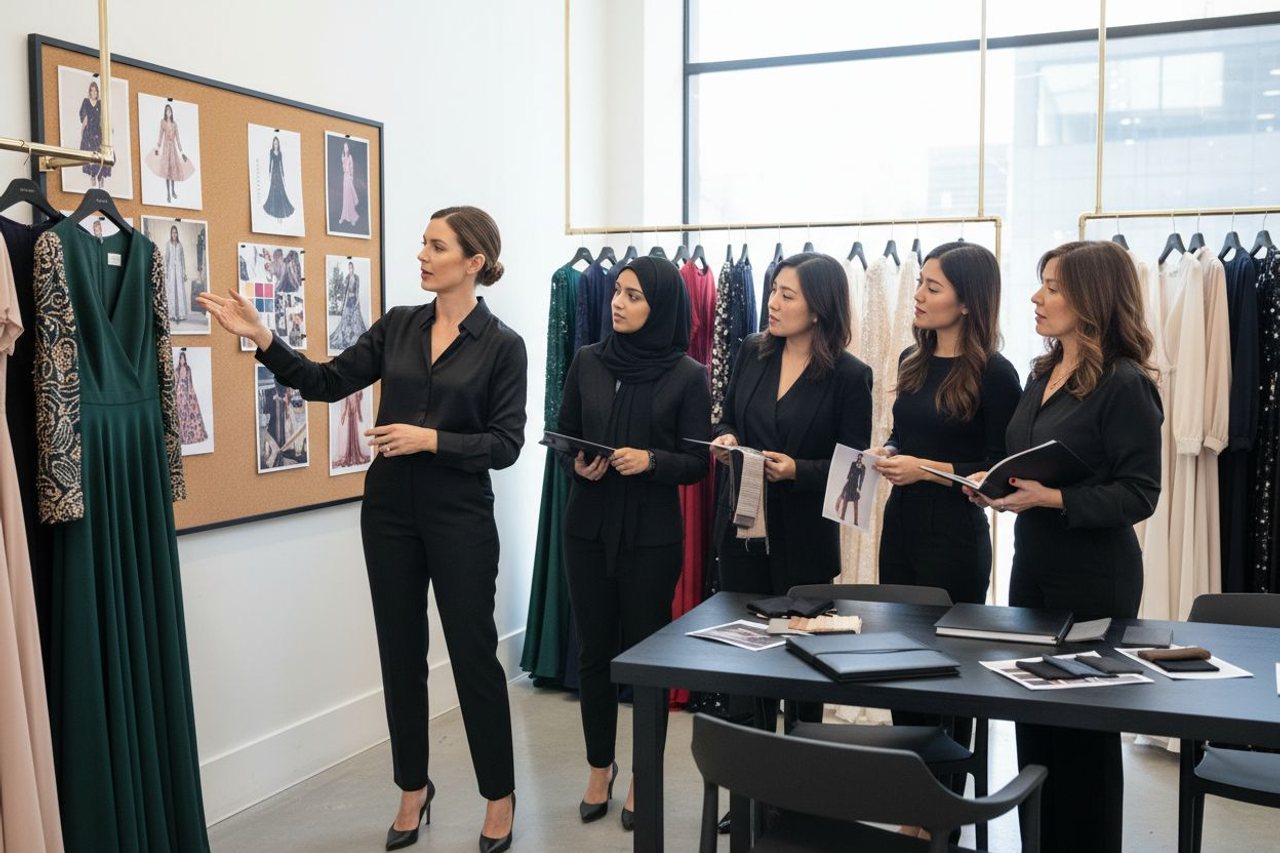Choosing Modest Formal Dresses for Every Special Event
Choosing Modest Formal Dresses for Every Special Event

Nearly 74 percent of women say comfort and confidence drive their clothing choices, showing that how you dress can impact how you feel. Finding a modest formal dress that suits your style and fits event guidelines is both a meaningful and practical journey. This step-by-step approach helps you identify your preferences, navigate dress codes, and discover styles that leave you feeling both polished and true to yourself.
Quick Summary
| Key Point | Explanation |
|---|---|
| 1. Define your modest style preferences | Identify your unique approach to modest fashion that reflects your personality, ensuring comfort and confidence in your clothing choices. |
| 2. Assess event dress codes carefully | Understand specific expectations for various occasions to choose attire that is appropriate for the event’s culture and formality. |
| 3. Explore diverse modest dress options | Discover elegant formal wear styles, such as A-line dresses and embellished gowns, that combine fashion with modesty. |
| 4. Focus on fabric and fit | Evaluate different materials and how well they fit to ensure comfort, style, and coverage throughout your event. |
| 5. Verify modesty before final selection | Ensure the dress aligns with your modesty values by checking its silhouette, transparency, and movement before making a purchase. |
Table of Contents
- Step 1: Define Your Modest Style Preferences
- Step 2: Assess Dress Codes And Event Requirements
- Step 3: Explore Available Modest Formal Dress Options
- Step 4: Evaluate Fabric, Fit, And Comfort Details
- Step 5: Verify Modesty And Make Your Final Selection
Step 1: Define Your Modest Style Preferences
Defining your modest style preferences means understanding how you want to express your personal fashion values through clothing that makes you feel comfortable and confident. This step is about discovering your unique approach to modest fashion that reflects your individual personality and cultural background.
Starting your modest style journey begins with honest self reflection. According to research on modest fashion, modest clothing isn’t just about covering up - it’s about feeling empowered and comfortable in what you wear. Think about what makes you feel most like yourself. Do you prefer loose flowing fabrics? Longer hemlines? Minimal skin exposure?
To map out your modest style preferences, consider three core aspects:
- Cultural Background: How do your cultural traditions influence your clothing choices?
- Personal Comfort: What silhouettes and coverage levels make you feel most confident?
- Event Context: How might your modest style shift between casual and formal settings?
Vogue highlights how modest style can create a distinctive aesthetic that’s both functional and fashionable. For instance, the ‘Torah-teacher aesthetic’ demonstrates how modest preferences can translate into a thoughtful wardrobe with knee-covering skirts, elbow-covering tops, and neutral color palettes.
Pro Tip: Your modest style is a personal journey. There’s no universal ‘right’ way - only what feels authentic to you.
In our next step, we’ll explore how to translate these style preferences into specific dress selections that match your vision of modest fashion. Ready to dive deeper into creating your perfect modest wardrobe?
Learn more about developing your personal style to refine your modest fashion approach.
Step 2: Assess Dress Codes and Event Requirements
Assessing dress codes and event requirements is about understanding the specific expectations for your upcoming special occasion. This critical step ensures you choose a dress that not only looks stunning but also respects the event’s cultural and formal guidelines.
Every event speaks its own fashion language. Research on modest fashion reveals that dress code expectations differ dramatically across global and cultural contexts. Religious ceremonies like Confirmation, for instance, have very specific guidelines about appropriate attire.
Start by gathering clear information about the event. Who is hosting? What is the official dress code? Is it a religious ceremony, professional gathering, or social celebration? Each context demands a different approach to modest dressing.
Consider these key dress code assessment points:
- Venue Appropriateness: Will you be in a traditional religious setting or a contemporary space?
- Cultural Sensitivity: Does the event require specific cultural dress considerations?
- Activity Level: Will you be sitting, dancing, standing for long periods?
According to guidelines for religious events like Confirmation, modest dress typically means:
- No sleeveless or backless outfits
- Avoiding tight or transparent fabrics
- Knee-length or longer hemlines
- Modest necklines that provide appropriate coverage
Pro Tip: When in doubt, always ask the event organizer about specific dress expectations. It’s better to clarify beforehand than feel uncomfortable on the day.
In our next step, we’ll explore how to select specific dress styles that meet these requirements while expressing your personal style. Want to dive deeper into understanding event dress codes? Check out our comprehensive dress code guide for more detailed insights.
Step 3: Explore Available Modest Formal Dress Options
Exploring modest formal dress options is about discovering elegant styles that provide both beautiful coverage and stunning design. This step will help you navigate the incredible world of modest formal wear that celebrates your personal style while meeting your comfort requirements.
The landscape of modest formal fashion is wonderfully diverse. According to fashion trend research, you have an impressive range of options that go far beyond simple coverage.
Consider these stunning modest formal dress categories:
- A-line maxi dresses with graceful silhouettes
- Long-sleeved embellished gowns with intricate details
- Tiered midi dresses offering elegant movement
- High-neck pleated gowns with sophisticated structure
- Modest jumpsuits for a contemporary alternative
Opulent modest designs take elegance to another level. Research on formal modest wear reveals exquisite options like silk and chiffon gowns featuring:
- Full sleeve coverage
- Modest necklines
- Hand-beaded embellishments
- Intricate bodice designs
- Mandarin collars
Pro Tip: Always consider fabric weight and drape. Heavier fabrics provide more structured coverage while lighter materials offer fluid movement.
When selecting your dress, think about how the style complements your body shape and personal aesthetic. Want to explore more about dress lengths and styles? Discover the nuances of formal dress selections to make your perfect choice.
Here’s a summary of popular modest formal dress options:
| Dress Type | Key Features | Best For |
|---|---|---|
| A-line Maxi Dress | Flowing silhouette Full coverage |
Formal events Weddings |
| Embellished Gown | Long sleeves Intricate details |
Evening galas Parties |
| Tiered Midi Dress | Elegant movement Knee Coverage |
Daytime events Receptions |
| High-neck Gown | Pleated Modest neckline |
Religious ceremonies |
| Modest Jumpsuit | Contemporary Full coverage pants |
Modern gatherings |
In our next step, we’ll discuss how to personalize your modest formal dress to truly make it your own.
Step 4: Evaluate Fabric, Fit, and Comfort Details
Evaluating fabric, fit, and comfort details transforms a beautiful dress into the perfect dress for you. This critical step ensures your modest formal wear not only looks stunning but feels incredible throughout your entire event.
Research on formal dress fabrics reveals that fabric selection is an art form. Different textiles create dramatically different experiences depending on season and personal preference.
Consider these fabric characteristics carefully:
- Crepe: Soft matte texture with elegant drape
- Chiffon: Lightweight and flowing perfect for layered looks
- Taffeta: Structured fabric providing architectural silhouettes
- Satin: Smooth sheen that catches light beautifully
Your fabric choice should align with both the event season and your personal comfort. Lightweight chiffon layers work wonderfully for summer events while structured matte textures provide warmth during cooler seasons.
Fit is equally crucial. A well-fitted modest dress should:
- Allow comfortable movement
- Skim your body without clinging
- Provide appropriate coverage
- Support your unique body shape

Pro Tip: Always move around when trying on a dress. Sit. Stand. Walk. Ensure the fabric moves with you gracefully.
Comfort goes beyond physical sensation. It encompasses how confident and authentic you feel wearing the dress. Find expert guidance on achieving the perfect formal fit to elevate your dress selection process.
In our next step, we will explore accessorizing your modest formal dress to complete your stunning look.
Step 5: Verify Modesty and Make Your Final Selection
Verifying modesty and making your final dress selection transforms your fashion journey from exploration to confident decision. This crucial step ensures your chosen dress perfectly aligns with your personal values and event requirements.
Research on modest fashion reveals that modesty extends far beyond simple fabric coverage. It represents a deeply personal expression of cultural identity and individual comfort.
To verify your dress meets comprehensive modesty standards, evaluate these critical elements:
- Overall Silhouette: Does the dress feel comfortable and true to your personal modesty values?
- Fabric Transparency: Can you see through the material when held up to light?
- Movement Test: Does the dress maintain coverage when sitting, walking, or dancing?
- Personal Comfort: Do you feel authentically yourself in this dress?
According to guidelines for formal and religious events, your dress should meet specific modesty criteria:
- Full sleeve coverage
- Neckline that provides appropriate chest coverage
- Length extending to knees or below
- Loose enough to avoid clinging
- Non-transparent fabrics
Pro Tip: Always do a comprehensive movement test. Sit. Stand. Raise your arms. Ensure the dress maintains your desired level of coverage in all positions.
Remember that modesty is deeply personal. What feels modest to one person might feel different to another. Trust your intuition and personal comfort level.
Ready to make your final selection? Explore our comprehensive guide to finding your perfect modest formal dress for additional insights and confidence in your choice.
Find Your Perfect Modest Formal Dress for Every Occasion
Finding a modest formal dress that feels authentic and event-appropriate can be overwhelming. You want to look elegant and stylish while honoring your values and meeting specific dress codes—whether for weddings, proms, Quinceañeras, or sacred ceremonies. The pressure to balance comfort, confidence, and modesty is real. At Dress Me Up NY, we understand your desire for both individuality and respect for tradition, and we are here to help you transform inspiration into reality.
Choose from a wide variety of stunning options, designed to match every style, silhouette, and occasion. Each collection honors the comfort, coverage, and confidence you deserve. Explore styles that feature beautiful details like full-length sleeves, flowing hemlines, and sophisticated necklines. Let your personal vision guide you to a dress that celebrates who you are.

Ready to discover a wardrobe that is as unique as your journey? Visit Dress Me Up NY and start browsing today. For inspiration and shopping tips, check out our guide to understanding personal style or see the formal dress fit guide for expert advice. Do not wait—your perfect modest formal look is waiting to be found. Shop now and step confidently into your next special event.
Frequently Asked Questions
How do I define my modest style preferences for a formal dress?
Start by reflecting on your cultural background, personal comfort, and the context of the event. Consider what silhouettes and coverage levels make you feel most confident, and note these preferences to guide your selections.
What should I consider when assessing dress codes for a special event?
Gather information about the event’s host, official dress code, and specific cultural or formal guidelines. Evaluate the venue, the activity level, and any cultural sensitivities to ensure your dress choice is appropriate and respectful.
What types of modest formal dresses should I explore for different occasions?
Consider styles such as A-line maxi dresses, long-sleeved embellished gowns, tiered midi dresses, high-neck pleated gowns, or modest jumpsuits. Each type offers elegant coverage suitable for various formal events, allowing you to find a dress that aligns with both the occasion and your personal style.
![]()
How do I evaluate the fabric and fit of a modest dress?
Select fabrics like crepe, chiffon, taffeta, or satin based on comfort and elegance, ensuring they align with the season of the event. When trying on dresses, assess the fit by ensuring it allows comfortable movement and provides the appropriate level of coverage without clinging to your body.
What steps should I take to verify that my dress is modest before the event?
Evaluate the dress’s overall silhouette, fabric transparency, and movement to ensure it meets your modesty standards. Conduct a movement test by sitting, standing, and raising your arms to confirm that the dress provides adequate coverage in various positions.
How can I personalize my modest formal dress to reflect my style?
Consider adding accessories like statement jewelry, stylish shoes, or a tailored jacket to enhance your modest dress. These elements can transform your look and make it uniquely yours while still adhering to modest style guidelines.
Recommended
- What is Formal Attire? Understanding the Essentials - DressMeUpNY
- Understanding Plus Size Formal Dress Advice for Every Occasion - DressMeUpNY
- Dress Code Explained 2025: A Guide for Special Events - DressMeUpNY
- Decoding Dress Codes: Your Guide to Formal Events - DressMeUpNY

